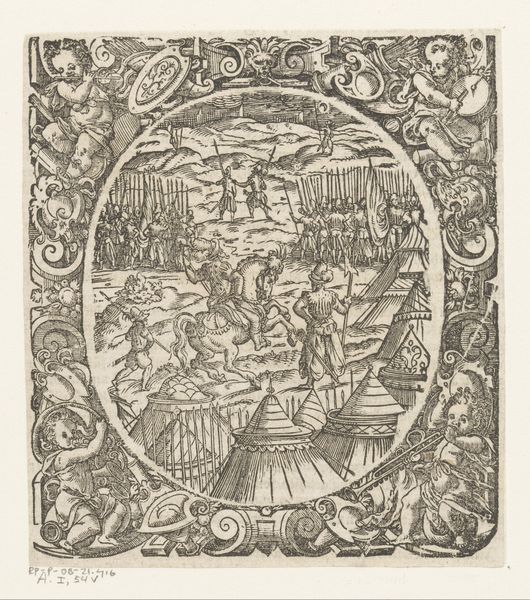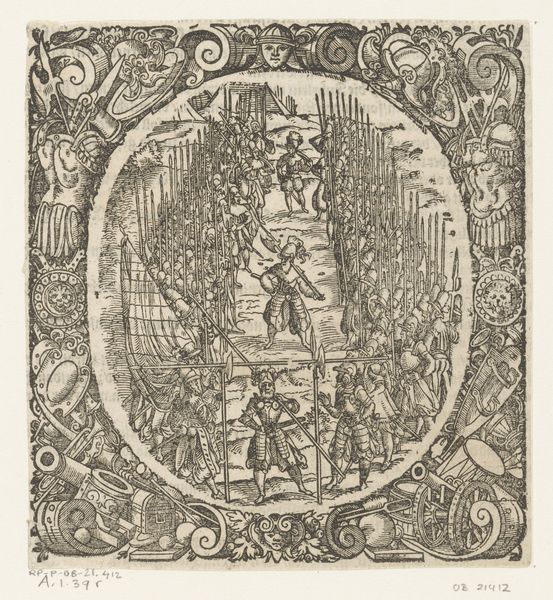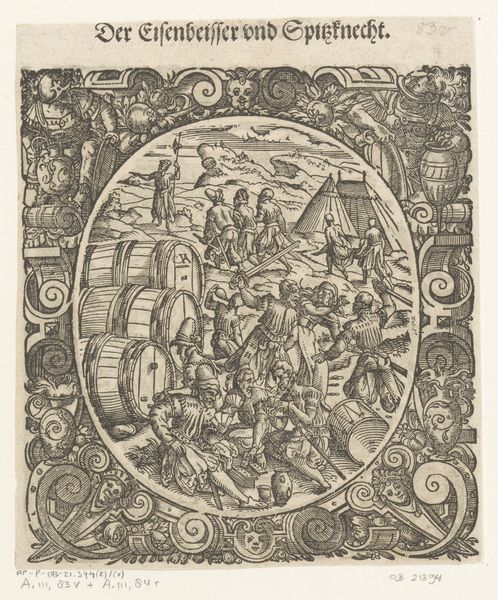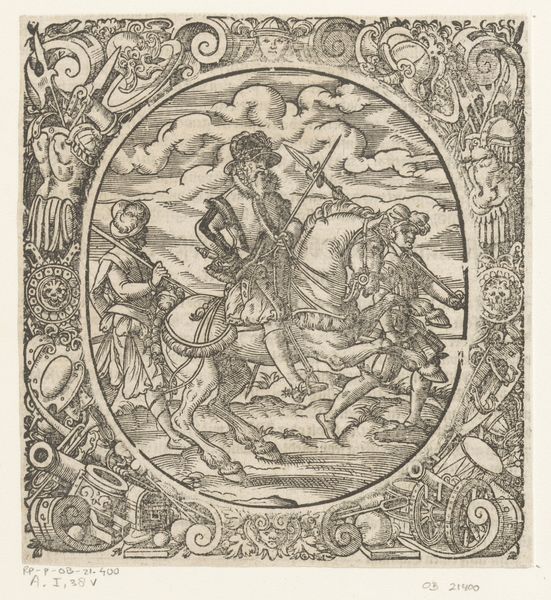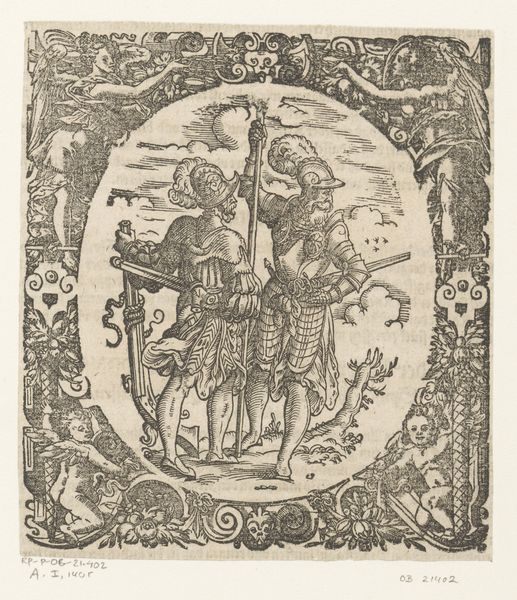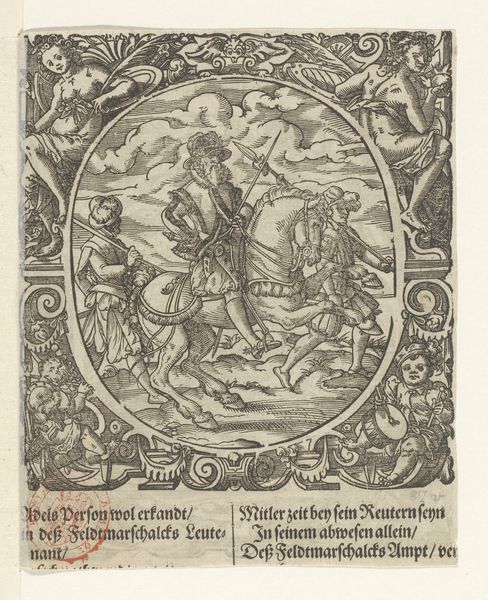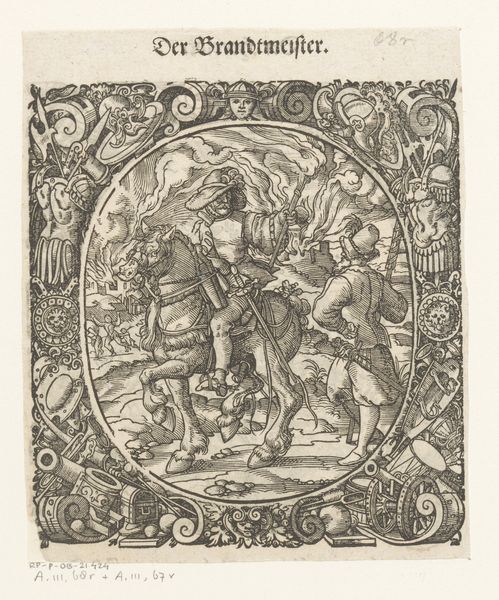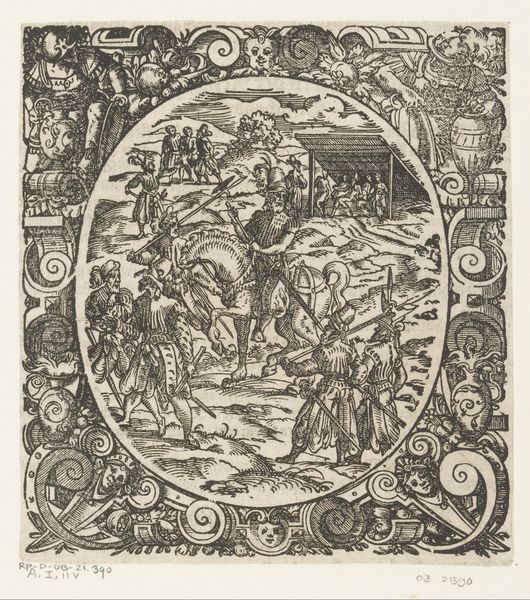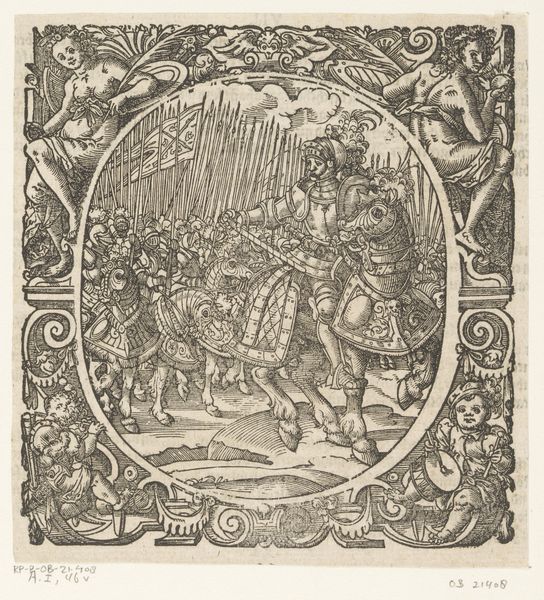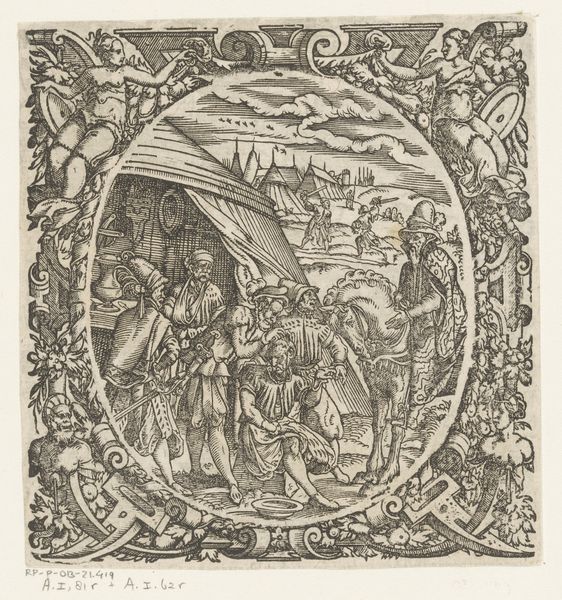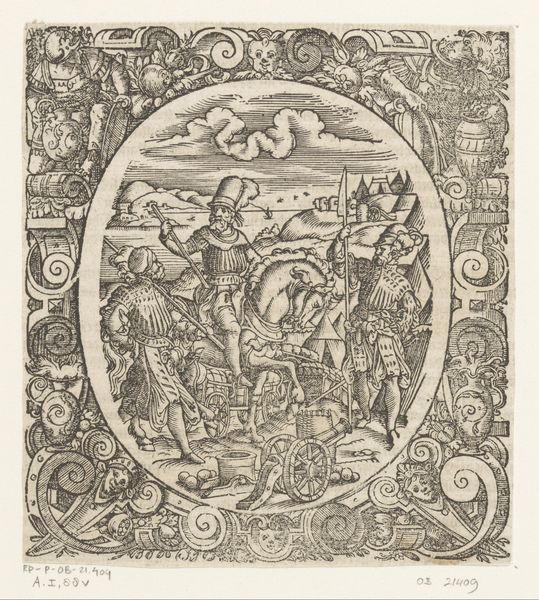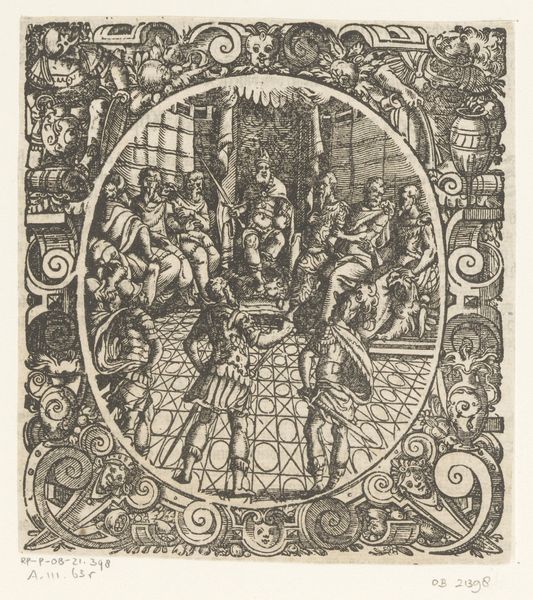
print, engraving
#
narrative-art
# print
#
old engraving style
#
figuration
#
line
#
genre-painting
#
northern-renaissance
#
engraving
Dimensions: height 137 mm, width 130 mm, height 115 mm, width 96 mm
Copyright: Rijks Museum: Open Domain
Curator: Jost Amman’s "Plundering Soldiers," a print dating from around 1573-1578, captures a raw moment in the cycle of conflict, and you can see it here at the Rijksmuseum. Editor: It feels like a scene ripped straight out of a nightmare. Everyone’s scrabbling over something. The composition itself is dizzying, almost claustrophobic. Like the eye can't rest for a second, doesn't want to. Curator: Precisely, and that sense of unease is very much the point. During this period, illustrated broadsheets like this served as visual news, spreading political messages among a largely illiterate public. They functioned like today's newspaper cartoons. Editor: The details, even in this little print, are so intense. I’m noticing a kind of detached energy in those figures. Their actions look practiced, almost casual, while total chaos breaks out. Curator: Indeed. Consider the context of its creation: the Dutch Revolt. These scenes of plundering weren't abstract; they were a reality. This is visual propaganda showing the perils of war and maybe implicitly urging the population towards a united front. Editor: And there's something brutal in making such horror so ornate. That border looks like it belongs in a totally different piece. Almost celebrates something perverse, as if chaos needs a fancy frame. Is that dragon vomiting foliage in the corner? Curator: Those decorative flourishes would likely appeal to a particular class of buyers, marking their belonging to certain taste. Also, those dramatic frames could function to separate art from reality to safely process events and enjoy aesthetic aspects of a violent scene, and yet... these ornamental elements, and that carefully controlled line, enhance the print’s impact as propaganda. The medium contains many different elements. Editor: Looking at it again, I can see that the ornamental framing and carefully observed chaos don't detract, they just sort of...distract. And I feel like it's hard to feel very much when such intense emotions have such artful execution. Food for thought! Curator: It is, exactly, something about distancing that the artist, and then history demands. A scene, but also a statement. The two coexist, prompting us to ask why it lingers with us.
Comments
No comments
Be the first to comment and join the conversation on the ultimate creative platform.

